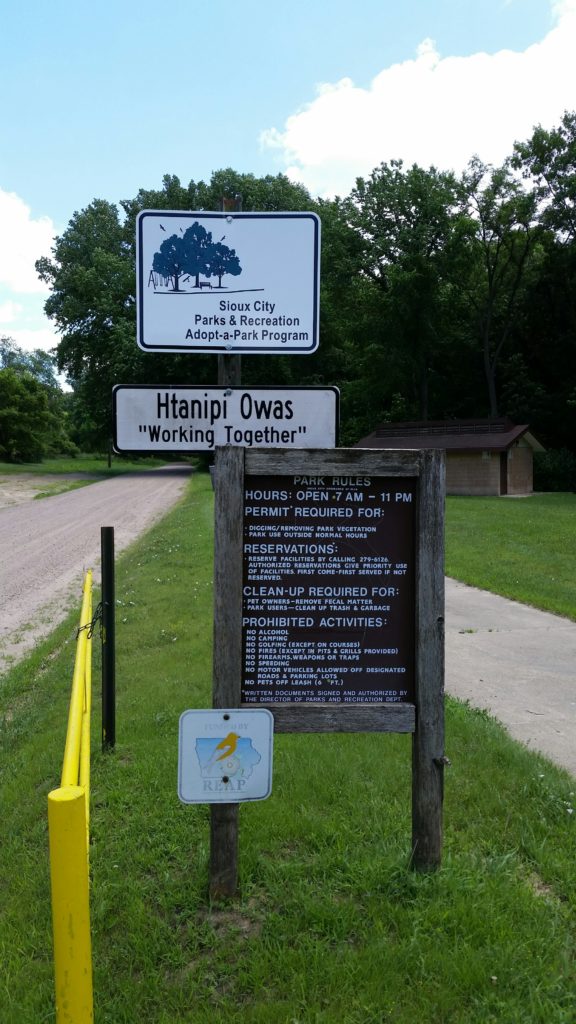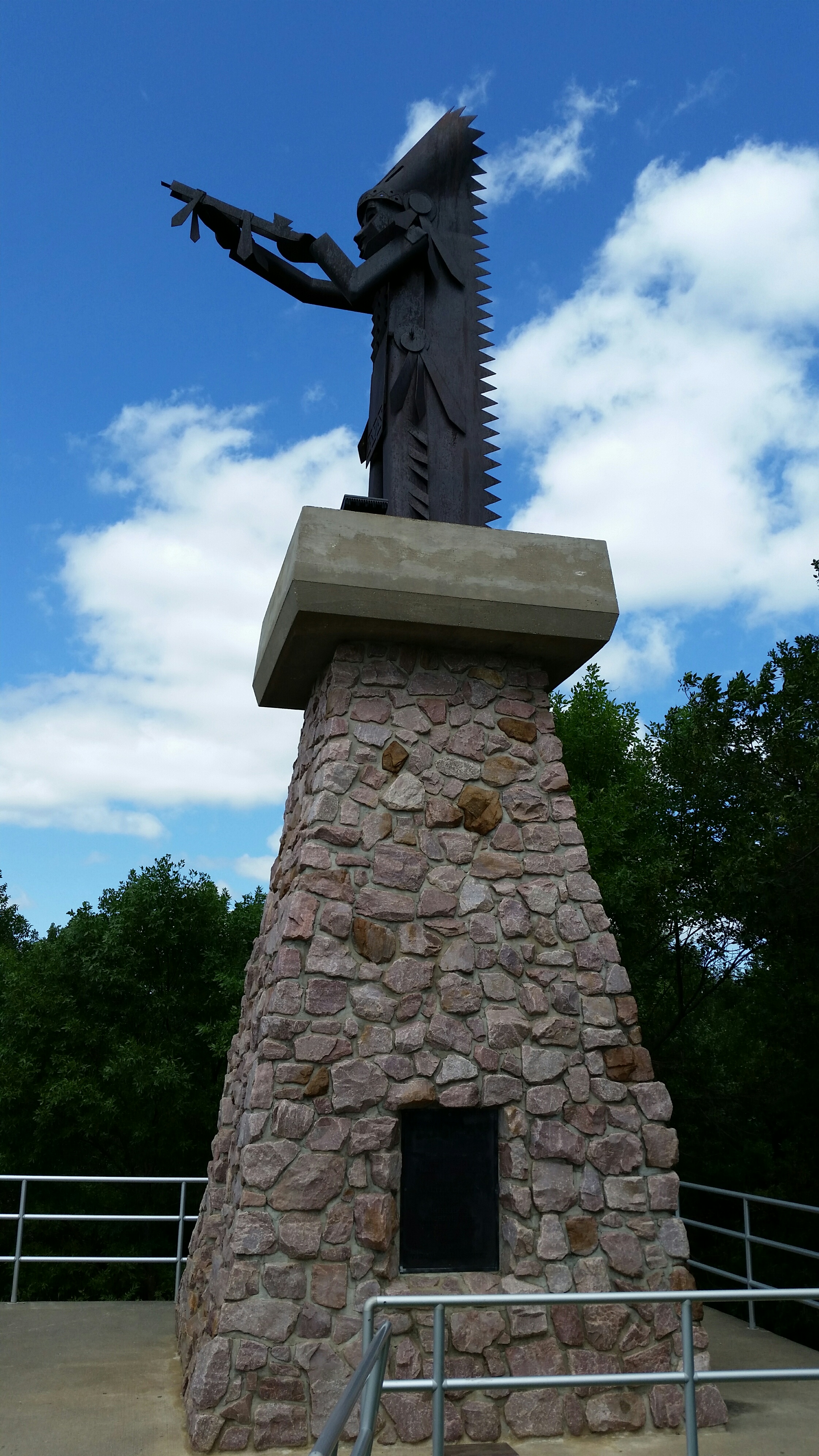So there’s an urban legend here in Sioux City that explains the reason why we have no real emergencies, and hardly any severe weather; we are protected by Chief War Eagle. Waŋbdí Okíčhize was his
So there’s an urban legend here in Sioux City that explains the reason why we have no real emergencies, and hardly any severe weather; we are protected by Chief War Eagle.
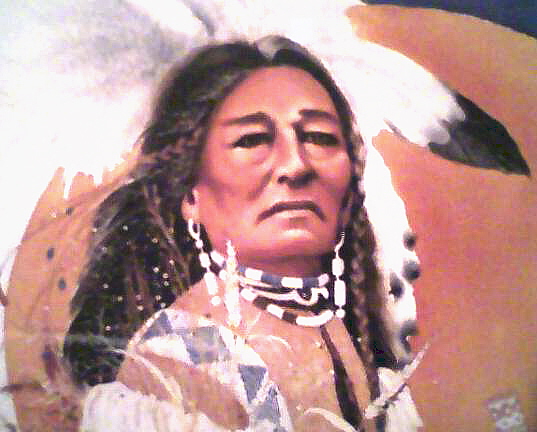
Waŋbdí Okíčhize was his name, which translates to Little Eagle. Born around 1785 in either Wisconsin or Minnesota, War Eagle was, ironically, a man of peace.
Leaving his tribe

Seeking to avoid a bloody contest as to who would become chief of his tribe, War Eagle left the Santee Sioux, and traveled to the Dakota Territory. Here, he would come upon the tribe of the Yankton Sioux in 1830. Soon after marrying, War Eagle was adopted into the Yankton Sioux tribe, and was even elected tribal chief in the mid-1830s. Settling into his new life, and new responsibilities, he and his wife, Mazakirawin, eventually had seven children, four girls and three boys.
Theophile Bruguier
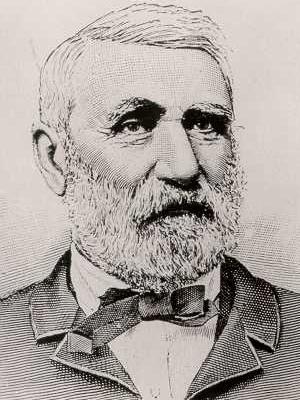
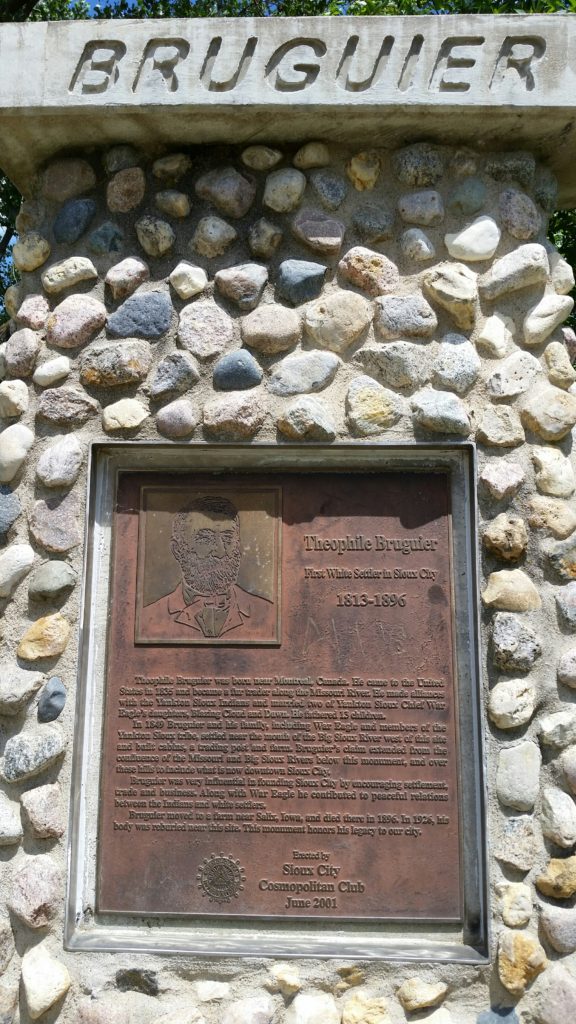
Two of his daughters, Dawn and Blazing Cloud, married Theophile Bruguier. You may have seen his plaque at the monument, and wondered who he was. Bruguier was a fur trader working for the American Fur Company, and became fascinated in the Indian customs after trading with them, and immersing himself in their culture. Deserting his white heritage, Bruguier was adopted into the Yankton Sioux tribe, and lived as a tribal member for 10 years.
The first white settler
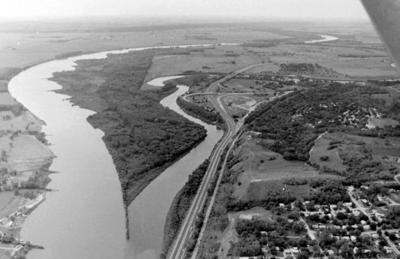
Growing weary of Indian life, Bruguier told War Eagle of a dream he had where two rivers meet. War Eagle took him to, what is now known as Riverside, where the Missouri meets the Big Sioux. Here Bruguier would build his log cabin, thus becoming the first white man’s dwelling.
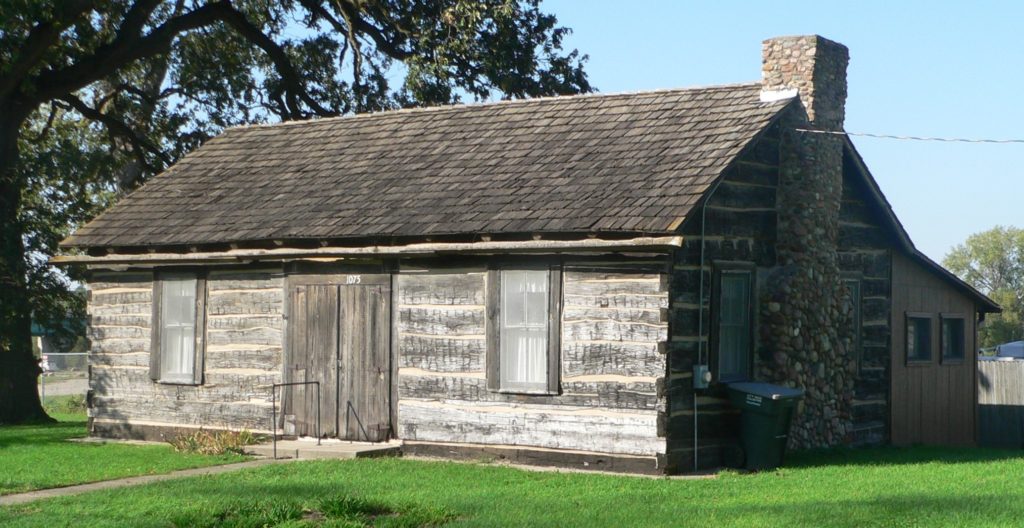
en.wikipedia.org
Deciding to live with his white son-in-law, War Eagle moved in with Bruguier, causing an uproar amongst fellow tribal men and women. How dare the chief live in a white man’s cabin, and leave behind his resourceful tepee.
tribal council meetings
Knowing his tribe would resist his decision, he stood behind his belief that not all white settlers are here to destroy and conquer, and those who are willing to work with the native people should be respected. Therefore, being the peaceful leader, he always was, his tribe naturally followed his lead. The Bruguier cabin became an assembly point for the Yankton Sioux, who would setup camp around the cabin, holding many tribal councils.
War Eagle’s refusal to engage in warfare against white settlers
Living with his white son-in-law was not the first time War Eagle purposefully associated with the White Men. During the War of 1812, War Eagle served as a messenger for the United States government, and eventually the American Fur Company, he also worked as a riverboat guide along the Missouri.
the yankton sioux
Allowing himself to be surrounded by white Americans, War Eagle came to view them as an ally against the British. Understanding that we must join forces, he refused to send his warriors out on attacks against the whites. In fact, his Yankton Sioux tribe was known to encompass no fear of neighboring tribes; territorial and confrontational, the Yankton Sioux were known as the “bad ones”.

Knowing what his tribe was capable of, and resisting the urge to use this power, reminds me of President Theodore Roosevelt’s foreign policy: “Speak softly and carry a big stick”. In contrast, War Eagle’s defiance and boldness in the face of hostile and overpowering odds labeled him as a man of great courage and valor.
You can read more about the many occasions where War Eagle opted out of battles that would ultimately end the lives of hundreds of white men via the Nature Center Magazine’s article: http://www.nc-mag.com/2012/11/war-eagles-grave.html.
awarded the silver peace medal
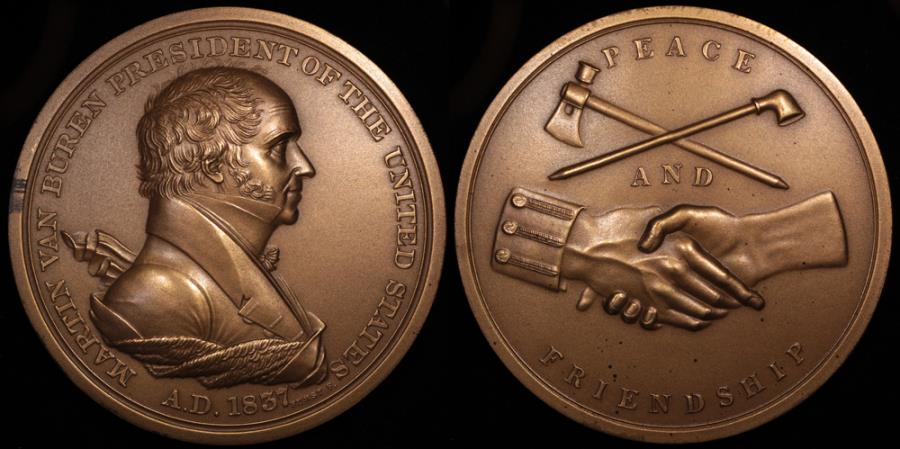
Because of his willingness to build relations with white Americans, War Eagle was rewarded by President Martin Van Buren himself. A Silver Peace Medal was presented to him in Washington, DC during a summit in 1837 dedicated to establishing peace treaties that would result in diplomatic settlements of Indian tribes along both the Mississippi and the Missouri rivers. This would become the largest gathering of chiefs and warriors of different nations and tribes in history.
War Eagle’s monument and resting place
In 1851, Chief War Eagle passed away in the cabin he built with Bruguier. His dying wish was to be buried on the bluff overlooking the area where Iowa, Nebraska and South Dakota meet.
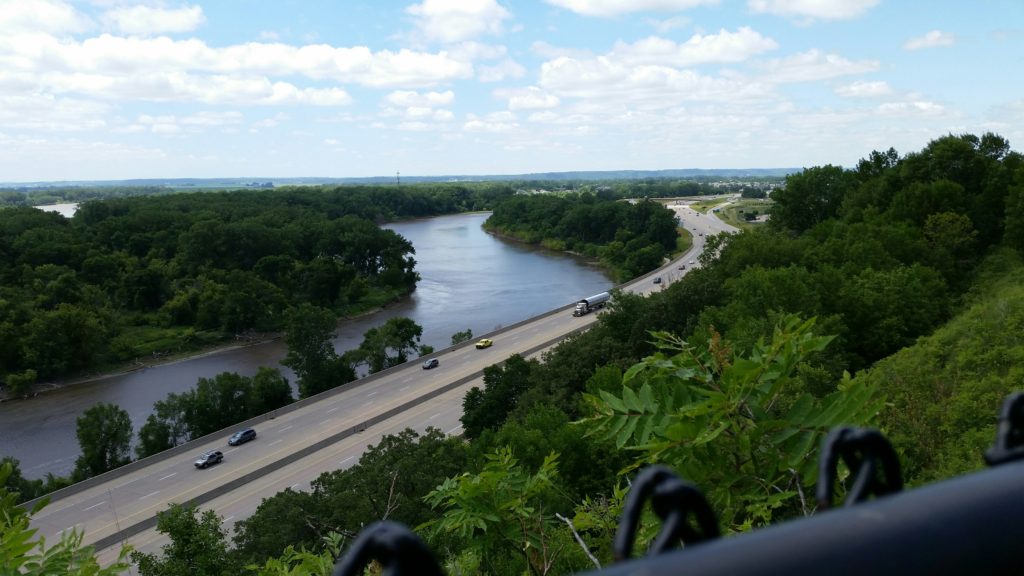
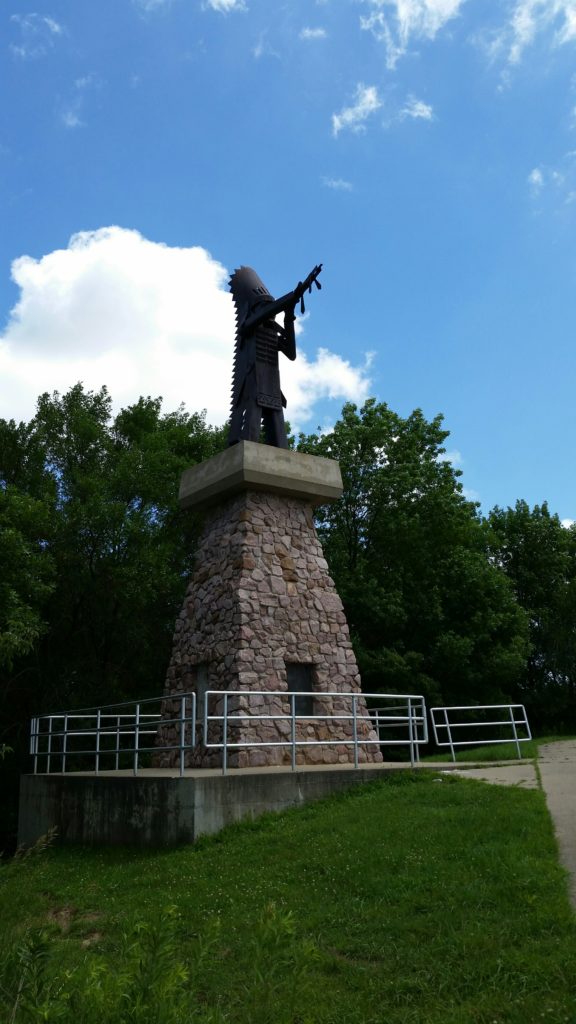

Today, an impressive 31-foot monument honors the great chief, depicting him holding a ceremonial peace pipe, and donned in an eagle feather bonnet.
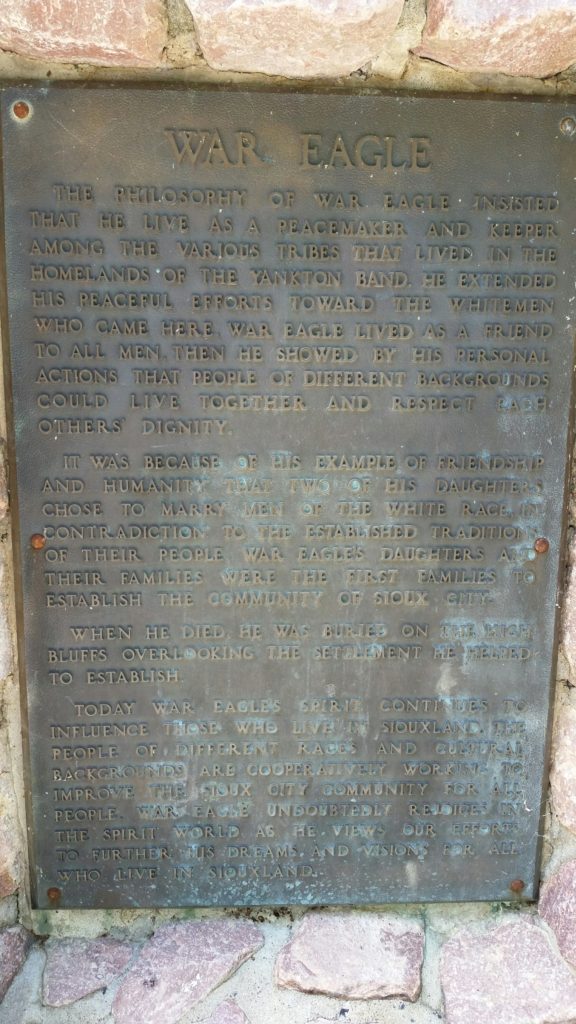
This monument marks War Eagle’s resting spot, and alongside him is Bruguier’s grave marker. War Eagle’s family is also buried up on the bluff in a private cemetery, not accessible to the public.
Sioux City
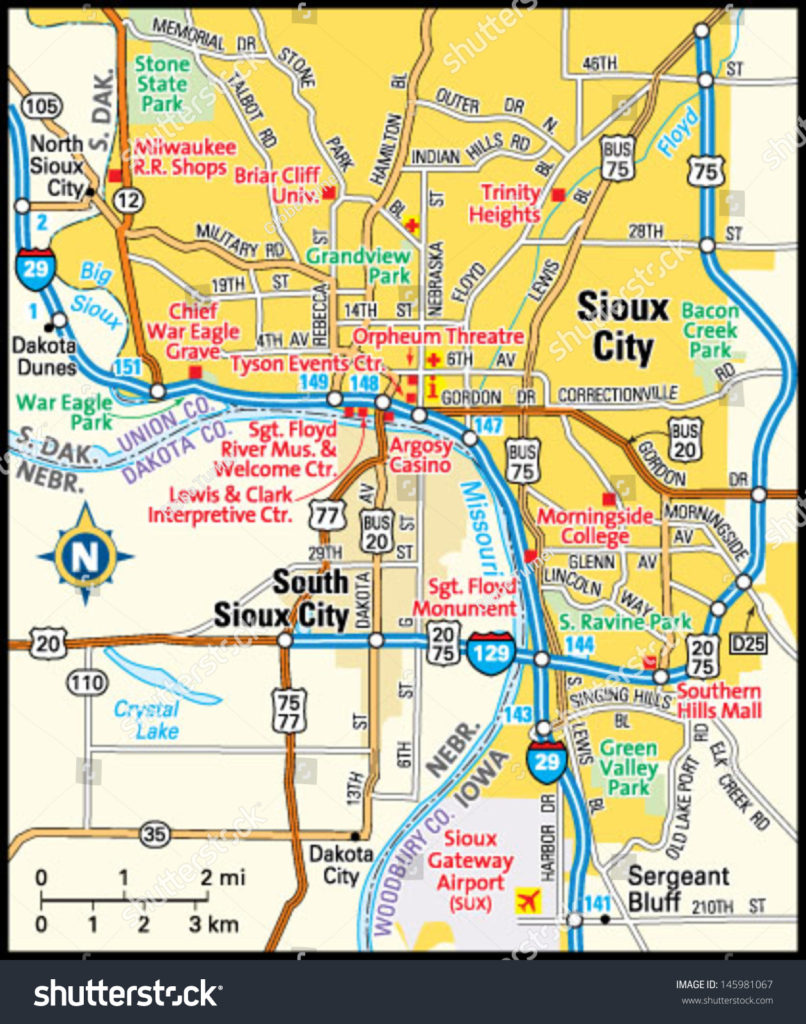
Establishing a flourishing river city, white settlers retained the name War Eagle gave this land, calling it “Sioux City”. War Eagle was known as a friend to white man, and without him white settlers would not have been allowed to build their community.
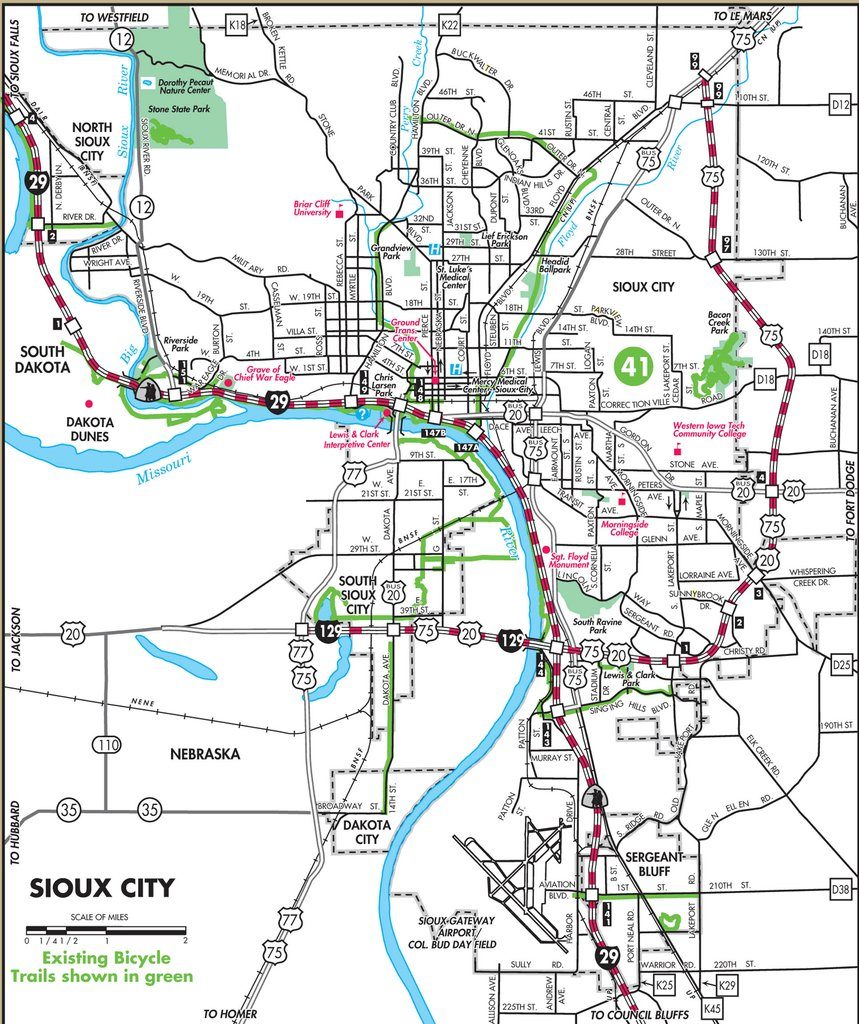
Final thoughts
Now that you know more about this barrier-breaking monument, and the efforts War Eagle took to build relations with white settlers, I hope you make your way to pay respects to this purpose-driven man. His kindness and patience has helped me become more appreciative of Sioux City. It has also helped me realize, that without War Eagle, there would be no Siouxland.

